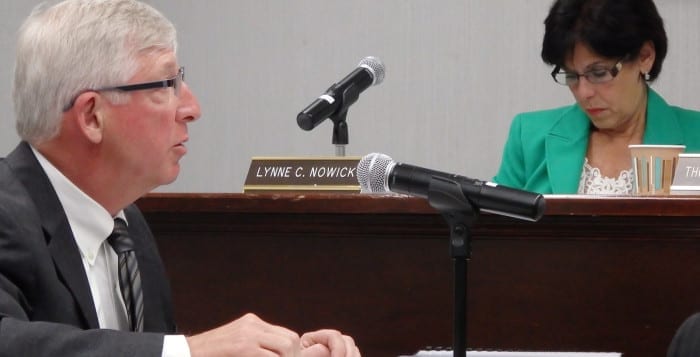Voters approved the Three Village school district budget Tuesday. The $189.5 million budget received 2,401 votes in favor and 723 against.
Residents also re-elected trustees William Connors and Deanna Bavlnka. Board president Connors received 2,200 votes and Bavlnka, 2,052. A third candidate, Jeffrey Mischler, who had hoped to unseat either Bavlnka or Connors, got 1,095 votes.
Connors, a board member since 2012, plans to continue the work the board had started and to “maintain the academic programs and quality that the district has been known for within the fiscal reality.”
Connors was previously on the board from 1994 to 2006.
Mischler, who congratulated the trustees, said early in the evening that it had been a “clean campaign” and that he was pleased that he’d been able to “stick to being green.” He had run his campaign primarily on social media.
Before the results were in, Bavlnka, a trustee since 2011, said she was very optimistic about the budget, which was her priority, because it directly affected the students in the district.
At the 2.79 percent cap on the tax levy increase, next year’s budget restores programs and staff cut in recent years. They include the return of fourth- through sixth-grade elementary health classes, high school American Sign Language, full-time elementary school social workers and increased guidance and counseling at the three secondary schools.
District officials have also said that declining elementary enrollment and retirements will make it possible to balance elementary class sizes and add a STEM teacher to each elementary school to help with science and math enrichment and remediation. At the secondary level, the administration will add 1.2 full-time equivalent English as a second language (ESL) positions to fill a state mandate. Positions will be added to reduce math and English class sizes and to restore electives in technology, social studies, science and math.
Three Village plans to restructure its administration for the 2015-16 school year without additional costs. New positions include a coordinating chair for junior high foreign language and districtwide ESL, a coordinating music chair as well as assistant directors for pupil personnel services, health and physical education and instructional technology. The 2015-16 budget includes money to restore security, clerical, maintenance and operations staff.
While a $1.65 million increase in state aid played a role in meeting the district’s budget, a $3.6 million decrease in retirement system costs and 5 percent drop in health insurance also helped. Assistant Superintendent for Business Services Jeff Carlson said that Three Village also has benefited from increased revenues from tuition paid by nonresidents attending its special education and Three Village Academy programs. That has netted an additional $1.2 million for the current school year.
The favorable financial situation means that the district will be using less money from its fund balance and reserve accounts to balance the upcoming school year’s budget. It’s the reason the tax levy increase will be higher than the 0.81 percent budget-to-budget increase, Carlson said.
The district will continue to undertake capital improvements covered by the bond residents approved in February 2014. An anticipated $3.39 million from the state’s Smart Schools Bond will go toward facilities for the prekindergarten program, as well as classroom, school safety and security technology, Carlson said. With a state-approved government efficiency plan that shows at least a 1 percent saving to the tax levy and with the budget within the cap, residents will be eligible for a tax freeze credit, he added.
Superintendent Cheryl Pedisich said the 77 percent approval of the budget sends an important message about support from the community and confidence in the school board and district.
















